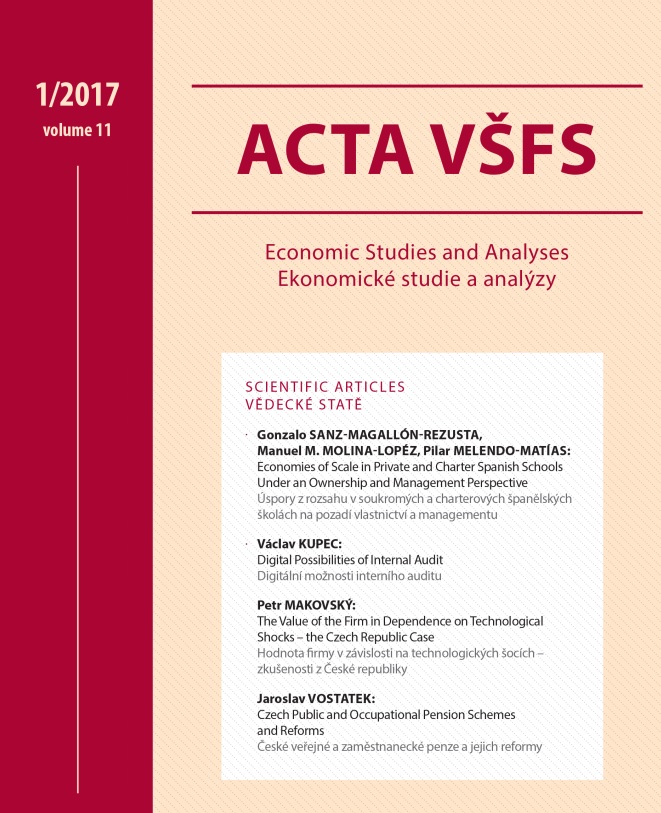The Value of the Firm in Dependence on Technological Shocks – the Czech Republic Case
The Value of the Firm in Dependence on Technological Shocks – the Czech Republic Case
Author(s): Petr MakovskýSubject(s): Economy, Business Economy / Management
Published by: Vysoká škola finanční a správní, a.s.
Keywords: technological shocks; GARCH; firm value; volatility; time series analysis; variance
Summary/Abstract: The article presents an innovative interpretation of the relationship between firm value and technological shocks. The motivation comes from the theory of technological shocks and their effects on the economy. We tried to confirm the hypothesis of neoclassical technology of the firm regarding the relationship between firm value and investment amount (interconnected with the interest rate). The relationship was empirically tested using a sample of data for the last 16 years (quarterly data). The Solow residuals represent the technological shocks and the PX index is an approximation of the firms´ value. The model explaining the rate of growth of the PX index in dependence on the Solow residuals is confirmed, but the linear coeficient is negative. However, it is close to zero value, which means that there is no dependence between the observed variables. The falsification of the neoclassical firm approach is argued using the Czech economy as an open small economy with high interdependence on the financial sector. Due to the presented solution, we secondly tried to explain the evolution in the firms´ value using autoregressive methods. We ran GARCH tests in order to gain a proper model of the PX index’s rate of growth behaviour.The most appropriate model was the GARCH (2,1) model. Moreover, we made a forecast of the volatility of the PX index. The theoretical values of the forecast ft the empirical data we observed. Furthermore, we discuss the features of the model on two levels: the whole time horizon of observations (quarterly horizon 1999-2015, 85 observations) and the post-crisis horizon (quarterly 2010-2015, 25 observations).
Journal: Acta VŠFS - ekonomické studie a analýzy
- Issue Year: 11/2017
- Issue No: 1
- Page Range: 45-60
- Page Count: 16
- Language: English

